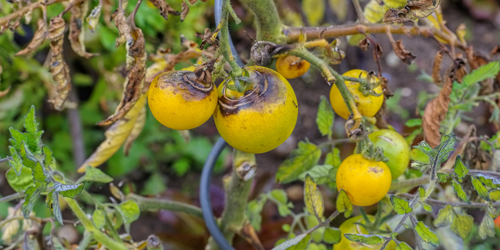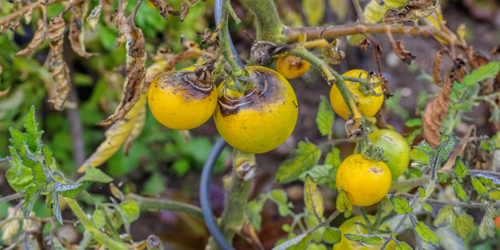Stopping the Spreading of Plant Disease
Sick plants are silent patients, but their diseases have consequences no less dramatic than those that affect humans. Pathogens like fungi, bacteria, and viruses can cause epidemics that devastate crops, bringing some species to the edge of extinction. Now, Jhony Ramírez of the University of Santiago de Compostela, Spain, and colleagues develop a new model that describes the spread of Phytophthora—an aggressive microorganism that afflicts tomato, cucumber, zucchini, and potato plantations worldwide. Phytophthora’s spores use flagella to spread through the soil, guided by chemicals released by the plants. To study how this spread could be prevented, the researchers apply their model to cases in which physical barriers—such as impermeable membranes—are placed randomly between the plants.
The researchers describe a plantation as a 2D lattice whose sites represent plants, and they model the transmission of the disease as a percolation process—similar to water passing through the filter of a coffee maker. They then study how the pathogen moves through the lattice as a function of plant susceptibility (the probability that a plant gets sick when exposed to the pathogen) and of the distribution of physical barriers between plants. The model allows them to derive formulas for the number of barriers per plant that would be sufficient to halt the propagation of the disease.
Using known susceptibility data from different species of Mexican chili plants, Ramírez and co-workers compute the minimal barrier number—depending on the specific plant lattice pattern—that would fully block Phytophthora's expansion. The researchers say the model might be applied to other plant diseases and could be put to the test in controlled environments like greenhouses or hydroponic gardens.
This research is published in Physical Review E.
–Matteo Rini
Matteo Rini is the Deputy Editor of Physics.





